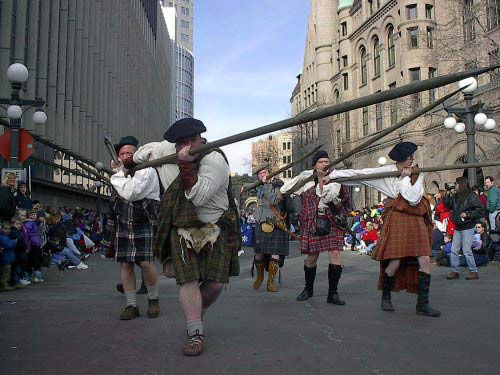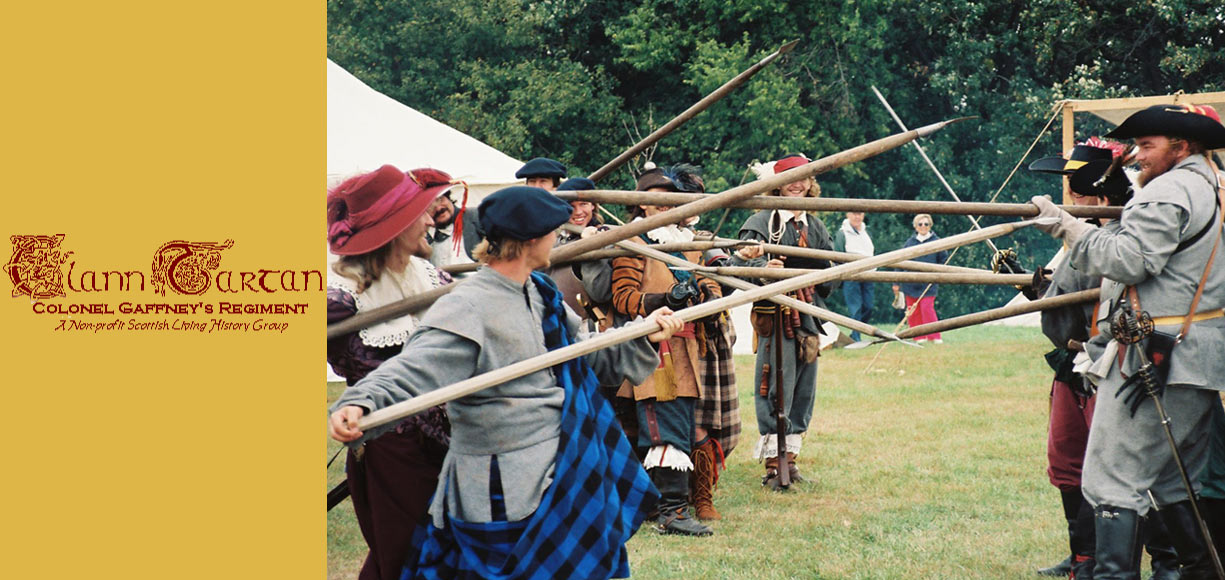Celtic Warfare
Notes from the book Celtic Warfare 1595 - 1763, by James M. Hill.
The book examines traditional Celtic battle tactics as they appeared in Scotland and Ireland. The first and foremost element being the Celtic, or Highland charge. The following description comes from the 18th century, but with the exception of references to tireanns, could be applied to almost any Celtic army through the centuries.
"Their manner of fighting, is adapted for brave but undisciplined men. They advance rapidity, discharge their pieces when within musket length of the enemy, and then, throwing them down, draw their sword, and... dart with fury on the enemy through the smoke of their tire... Their attack is so terrible, that the best troops in Europe would with difficulty sustain the first shock of it; and if the hordes of the Highlanders once come in contact with them, their defeat is inevitable."
These types of massed attack resemble similar tactics of "tribal" warfare around the world. The charge would start as a line, which would break- into knots of men who would try to break through the enemy's line. When combined with an eerie blood-curdling war-cry and the Scots' reputation as being ferocious fighters, it was an effective tool under certain conditions, and succeeded in defeating larger forces on several occasions.
"The charge succeeded because of the emphasis placed on individual prowess and accomplishment. They preferred individualized combat that highlighted the strength of each warrior. Armed with sword, targe and later, musket, the Celtic fighter was a self-contained fighting unit. Because the Celts emphasized the individual warrior, they were best... in small, mobile armies. A Celtic general, often the foremost warrior of his clan, found it easier to command a small force he led by example. He took upon himself the most dangerous and demanding tasks, cementing the all-important bond of trust between him and his subordinates."
There are several reasons, however, that could cause the Highland charge to fail. It worked best in rough country were a more "modem" army, trained to move as a unit, would not have room to maneuver. In open country, a disciplined army had time to whittle down the charge with arrows, or musket-fire, or could move around to engulf them with greater numbers. Fighting as individuals, the Scots often lacked the discipline to regroup, and hold off a counter-attack if their initial charge failed. In addition, a lack of organization providing support services, quartermaster units, or an officer corps limited the effective size of Celtic armies and meant they could not provide adequate supplies for any great length of time when they fought away from their home areas.
"Since the Celts were vulnerable against regular armies on smooth terrain, they often employed guerrilla tactics within their own territory. Such tactics accounted for most of the Celts' successes against Julius Caesar during the Gallic wars... as well as the victories of Hugh O'Neill over the Elizabethan armies of the late 16the century.. The awaited unsuspecting enemy columns behind plashes (wall-like hedges) flanked by deep ditches, attacked savagely, and then disappeared into the safety of forest, or bog. In this manner the Celts were able to use their tactical offensive - the charge - against an enemy, who despite his overall strength, was at a temporary disadvantage."
The author does mention, however, that during the 1640's guerilla tactics almost disappeared from Scottish use. It is merely conjecture based upon the dates, but this temporary change in tactics may have been influenced by Scottish involvement in the 30 Years war. Scottish mercenaries began coming home from the war at the end of the 1630's and we know some officers who fought with Gustavus Adolphus did so in order to learn his strategies and tactics. This halt in guerilla tactics may well have been the result of our lads trying to apply "modem" methods to the conflicts at home.
Although the book Celtic Warfare actually spends little time discussing our era (1550-1750), it does provide us with a wee bit of justification for portraying our period. About 1660 the English began to place less emphasis on their navy, and began to up-date their land forces. These modernization wreaked havoc on the Highland charge. More accurate muskets -and light, mobil cannons could cut down a charge before it arrived. Also, the invention of the socket bayonet meant that the enemy could continue to fire until the last moment, and yet have a bayonet fixed and ready for single combat when the charge hit. Thus, our period might be considered the end of the "romantic" period of Celtic warfare. After our period, the traditional tactics that Scots wer unwilling to change, simply could not resist the better equipped and more disciplined armies that they had to face. To end, I’ll like to share some miscellaneous quotes from the book, that are of interest.
"Generally, when Gael fought Gael, honor and courage were rewarded by a lenient attitude concerning the final kill. If during a feud, both side demonstrated prowess and courage... it was likely that the number of fatalities would be relatively low as each side "rewarded" the other by sparing as many warriors as possible. Only those who behaved in a cowardly manner would be killed. Thus each clan upheld its honor at minimum cost. When the clans faced the Lowlanders, however, especially those who would not stand and fight manfully, the slaughter that followed, resulted from contempt for cowardly behavior. Their attitude towards the Campbell’s was of a different nature... They recalled many brave feats performed by Campbell’s, but in 1644-45, Campbell prowess in battle could not overshadow their alliance with the Lowlanders and English."
"The study of warfare of... the Celts is merited for several reasons, one of the most important being that Gaelic warfare played such a significant role in the development of the New World. Imagine... what the demographics of North America might have been had Gaelic Ireland not succumbed to the English, or had one of the Jacobite uprisings been successful... A flood if displaced Gaels went to America between 1700 and 1776, and eventually peopled the frontier south.

